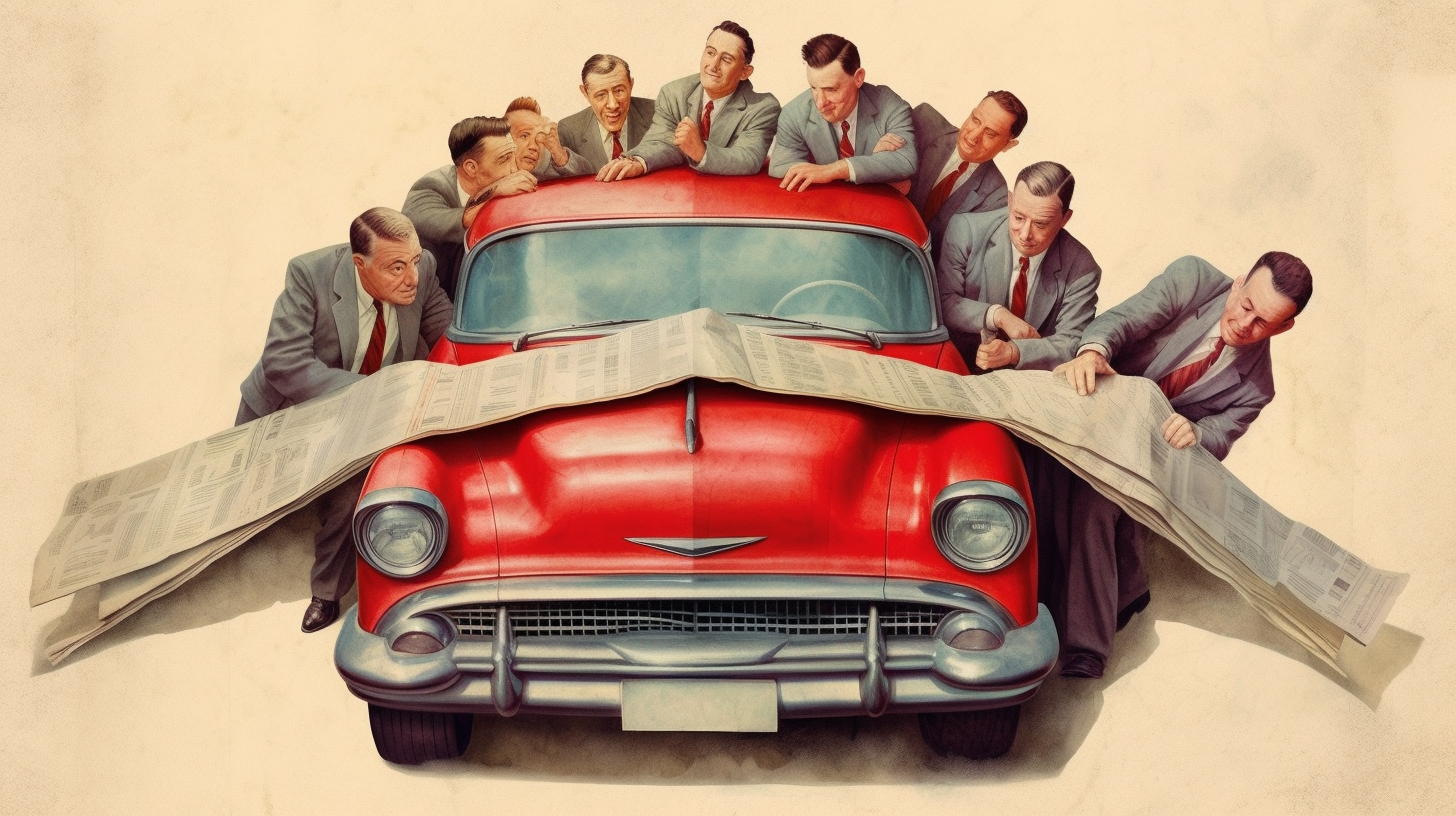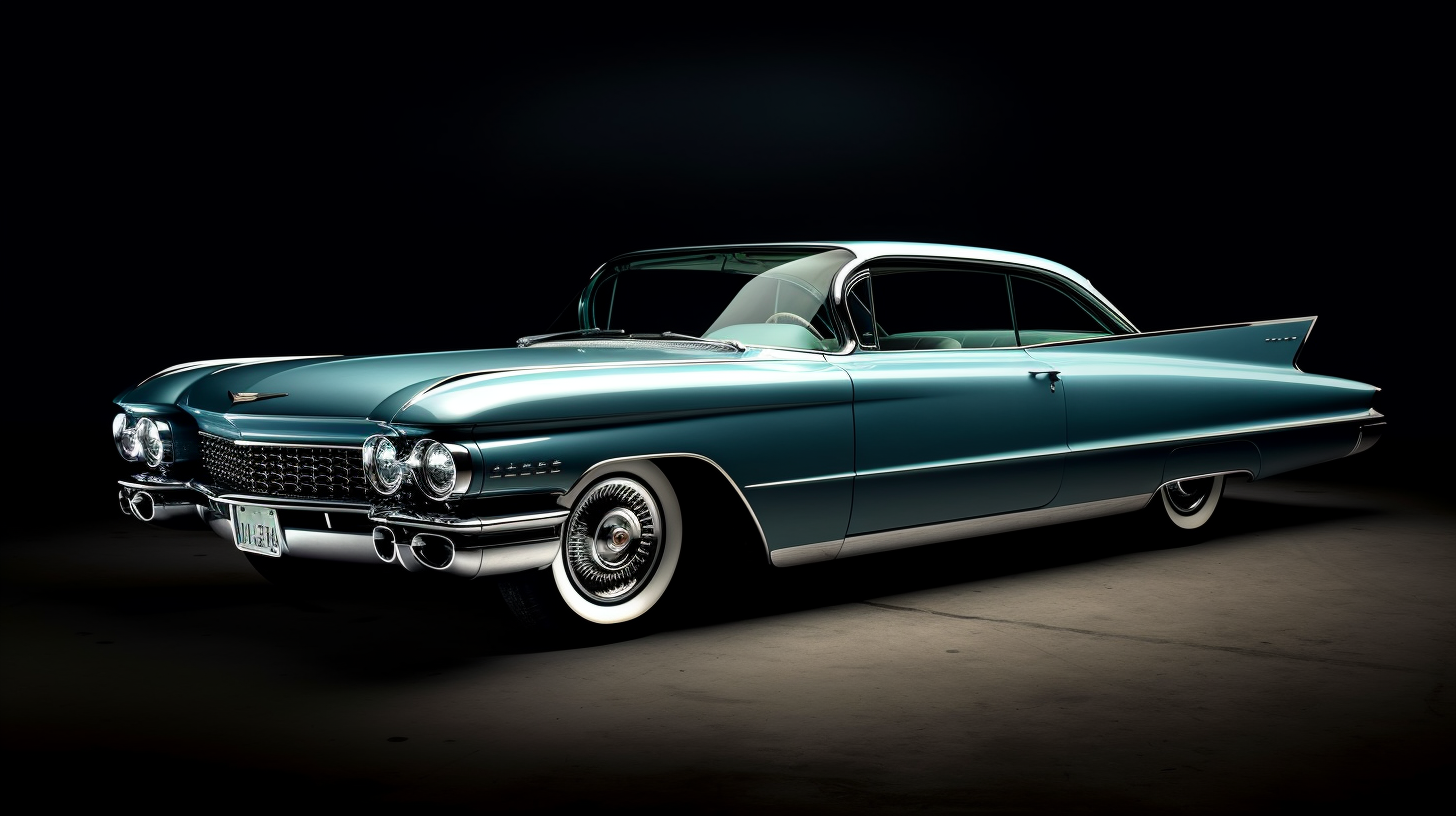The Managerialist Takeover of General Motors
Research notes and musings on Bob Lutz's excellent book, "Car Guys vs. Bean Counters."

In the world of automotive giants, few figures loom as large as Bob Lutz. Lutz's career spans over five decades and includes significant contributions to the development of iconic vehicles such as the BMW 3 Series, Ford Explorer, Dodge Viper, and Chevrolet Volt. He’s held executive positions in all of the United States' Big Three automobile manufacturers.
Lutz isn’t just a successful businessman—he’s also a colorful, contrarian character (“Maximum Bob” is one of his many nicknames). As Vice-Chariman of GM, he reveled in dishing out unfiltered takes on industry orthodoxy using the company's official blog. Lutz also wrote three books, including the insightful and entertaining Car Guys vs. Bean Counters: The Battle for the Soul of American Business. I’ve recently read this book. Here are my highlights and commentary of notable themes and passages:
1. How GM lost is Mojo
Up until the early 1960s, General Motors’ design and engineering prowess dominated the industry. The most talented designers aspired to work in GM’s Styling department, and brought to world unique designs like the lateral fins of the 1959 Chevrolet or the vertical fins on the 1961 Cadillac.

The high watermark of GMs’s penchant for bold and imaginative design was the company pavillon at the 1964 New York World Fair: the 230,000 square foot structure boasted a 10-story canopy and an interactive exhibit (Futurama) featuring gas turbine-driven cars, acquacopters, underwater hotels, and other bold applications of future GM technology.

With daring and creativity came success: nearly half of all vehicles sold in the US bore the emblem of a GM division. At that time, the GM’s Tech Center in Warren, Michigan—housing Design, Engineering, and Advanced Research—was the beating heart of the company. The Tech Center was where automotive dreams materialized, concepts took shape, and production decisions were made. It was also where future Presidents and COOs made their name, often rising from the ranks of engineering.
Towards the end of the 1960s, according to Lutz, things started to change. A cadre of “professional managers,” often individuals with MBAs and strong financial backgrounds, became increasingly prominent and powerful. Driven by an unshakable faith in the power of optimization and rational planning, professional managers sought to bring order, efficiency, and predictability to how cars were developed:
No longer would GM produce flamboyant, impractical designs with crazy fins, menacing chrome grilles, and interiors out of a Buck Rogers movie. No more “secret” or “no unauthorized entry” studios. Design was to be put in its place; the era of the prima donnas was over. “These guys are just artists, for crissakes,” GM execs declared. “They’re no more important than the guys who design shampoo bottles at Procter & Gamble.” Design was to become “part of the system.”
From now on, products would be initiated by Product Planning (a department composed of recycled finance types); they would ferret out market segments and define exterior dimensions and interior roominess to the millimeter... Instead of being originators, as in the old days, the designers simply were told: “Here, we’ve decided what this car is going to be. How long the hood is. Where the windshield touches down. We’ve defined all the roominess criteria. By the way, for investment reasons, we’re going to share doors across divisions. We’ve done all the hard work, so all we need from you is to wrap the whole thing, OK?”
As a result, the system created research-driven, focus-group guided, customer-optimized transportation devices, hamstrung in countless ways, using a chassis too narrow here, wheels too small (but affordable!) there, and all sharing too much with the other brands. At the end of the “creative” process, the designers were now reduced to the equivalent of choosing the font for the list of ingredients on a tube of Crest.
Lutz argues that in the “old” GM, the ethos of the company was designing and building cars that surprised and delighted their customers. In the “professionally managed” and financialized GM, “cars were merely a transitory form of money: put a certain quantity in at the front end, transform it into vehicles, and sell them for more money at the other end.” It’s no coincidence that people with engineering expertise, design flair, and deep empathy for the customer became an increasingly rare and less influential presence on GM’s executive floors.
2. Central Planning for Products
As these disciplines became weaker, Product Planning became stronger—too strong, according to Lutz:
Most product planners are highly analytical left-brainers, often of exceptional intelligence, and many are recycled finance executives with the same fondness for and faith in highly detailed quantitative analysis—the farther into the future, the better.
The Product Planning team wasn’t particularly interested on pursuing distinctive cars. Their focus was more prosaic—running the numbers in search for operational efficiencies, and new market segments:
Product planners will often use statistical data to come to highly improbable conclusions, and since they are there to plan “new entries,” there is a pronounced tendency to identify ever more “segments,” or pockets of demand, and “subsegments” within the segments. And, each time a “segment” is “discovered,” a certain percentage of it is assumed for the GM brand in question. Adding all that up theoretically results in more market share, but in the real world, it does not.
According to Lutz, customers view similar vehicles as essentially the same, often opting for the cheaper model, regardless of the segment it was designed for. This mismatch between Product Planning and consumer perception can lead to one model cannibalizing the sales of another from the same brand, as was the case with the Chevrolet Equinox and the Trailblazer, or the Ford Escape and the Explorer.
‘No, no, you foolish customers! You’re not supposed to do that!’ - the product planners cry.
If you’re good at number crunching, finance, and marketing, you’ll tend to prioritize your fancy analysis of new micro-segments over time in field to truly understand unmet customer needs. This is what happened at GM, according to Lutz. The result? A fleet of mediocre, research-driven, focus-group guided vehicles that contributed to the decline of a once-great automotive giant.
3. The Advent of “Brand Managers” in the 1990s
The supreme confidence in the ability of managers and administrators to solve all consequential problems using highly generalizable “”rational” methods partly rests on the notion that companies are more alike than different. If you believe this, then you’ll be tempted to cut and paste a set of generic “best practices.” GM did this in several parts of the organization, but arguably the the 1990s adventure into brand management represents the apotheosis:
Every U.S. auto company has, at some point, been influenced at the board level by the CEO of a consumer products company. What all of these experienced CEOs had in common was a deep belief, based on decades of experience with detergents and toothpastes, that “brand management” was the only effective way to run a multibrand operation.
To pursue this, GM built a large branding bureaucracy:
The GM system decreed that every model be a “brand.” With Chevrolet, Pontiac, Buick, Oldsmobile, and Cadillac, GM encompassed over ninety distinct “brands.” Each had a brand manager to whom reported a brand product manager and a brand marketing manager. But there was also a need for coordination by category, so the passenger car brand managers were, in turn, supervised by a Chevrolet passenger car manager; this was repeated in the other GM divisions (couldn’t call them “brands” anymore, even though that’s what they were!), and trucks.
The new branding department was led by an executive recruited from a pharma and optical company (Bausch & Lomb). In turn, he hired hundreds of young marketing people to create tailored advertising and marketing plans for each line:
Many, if not most, of the stalwart newcomers came from such complex industries as beer and soft drinks. Most didn’t have the remotest clue about the car business. Many came from New York City and barely drove.
Fragmenting marketing expenditures into 90+ brands made most of the car lines slide below the awareness threshold level. But the impact of all these marketing administrators went beyond low marketing ROI, and even the overhead cost:
Each of these brand managers, with the attendant “product” and “marketing” people below them, had to do something. Given the industry reality of shared platforms and drivetrains, how could they engender some new, wonderfully unique product for their brands? Sorting it all out became a near-insurmountable task for Product Planning, the group that translates Marketing’s wants into an actionable product description to guide the designers and engineers. To establish a degree of order and consistency, a “check the box” set of visual requirements was ultimately established for each “make” (Chevrolet, Buick, etc.), and each of the “brands” (Cavalier, Malibu, etc.) within that make that would share them.
The focus, then, was not on design excellence but, rather, on the presence of certain “brand characteristics.” Thus, every Chevrolet was to have a huge, chrome “whisker” across the front end. (The idiotic fallacy behind this was that the Chevrolet truck buyers loved the appearance of their vehicles, including the wide chrome band. So, the reasoning went, if we make the cars look more like the trucks, people will start loving the cars, too. Didn’t work.) All Pontiacs were to have plastic body cladding, lumpy and unappealing as it might have been. A further Pontiac “brand characteristic” was headrests that were like padded rectangular picture frames, with nylon mesh forming the inside. All Chevrolets, and only Chevrolets, were to have five-spoke wheels . . . no other GM make could. I wonder if anyone let the competitors know, as five-spoke alloy wheels are a fairly general configuration.
When you remove product decisions from people who are closest to the customer and who are truly and immediately accountable for market results, you end up with formulaic, insular, make-work processes based on abstractions that distract the organization’s attention from what really matters.
4. Performance Management Madness
Lutz became Vice Chairman of GM in 2001, and he got up close and personal with a variety of dysfunctional, bureaucratic processes at the company. The one he most wishes to have fixed (had he become CEO) is the Performance Management Process:
I would have summarily scrapped the hallowed, enormously time-consuming “Performance Management Process” system, with its dozens of interlocking “functional” versus “geographic” goals, all “box-balanced” by region and function for absolute precision, eliminating any inconsistency in goal setting. The worst thing about the PMPs was that, when the laborious process of goal setting and metrics was finally complete, after months of work by the HR department, it was already out-of-date.
The painstakingly curated, exhaustively debated, and meticulously documented objectives found themselves relegated to the confines of office storage, only to see the light of day during the mid-year reviews. In an almost ritualistic consensus, everyone concurred that, considering everything that had changed, “we were working on the right things.” The justification for the Performance Management Process (PMP) often hinges on its supposed merit of "alignment" around a unified corporate direction. According to Lutz, the PMP merely injected a veneer of analytical assurance, and contributed little to GM’s ability to innovate and adapt (sounds familiar?)
"The PMP process added nothing except, once again, that analysis-derived comfort level.”
While much of Car Guys vs Bean Counters focuses on GM and the auto industry, Lutz thinks the problem is pervasive across corporate America, and that’s why so many companies have missed the future. Too many organizations have become too left-brained, too centralized, and too myopic to deliver amazing value to customers, and sustained business performance. Too many companies have optimized and proceduralized their way to mediocrity.
Lutz doesn’t leave the reader with a clear set of recommendations (he does wish business education were less focused on numbers and financial engineering). But his first-hand account of the managerialist takeover of an American corporate icon strikes a chord with me, and is consistent with lots of other stories I hope to write about in the coming weeks.
Thoughts? Comments? Reactions? Please share them in the member discussion section 👇 (sign in required)
